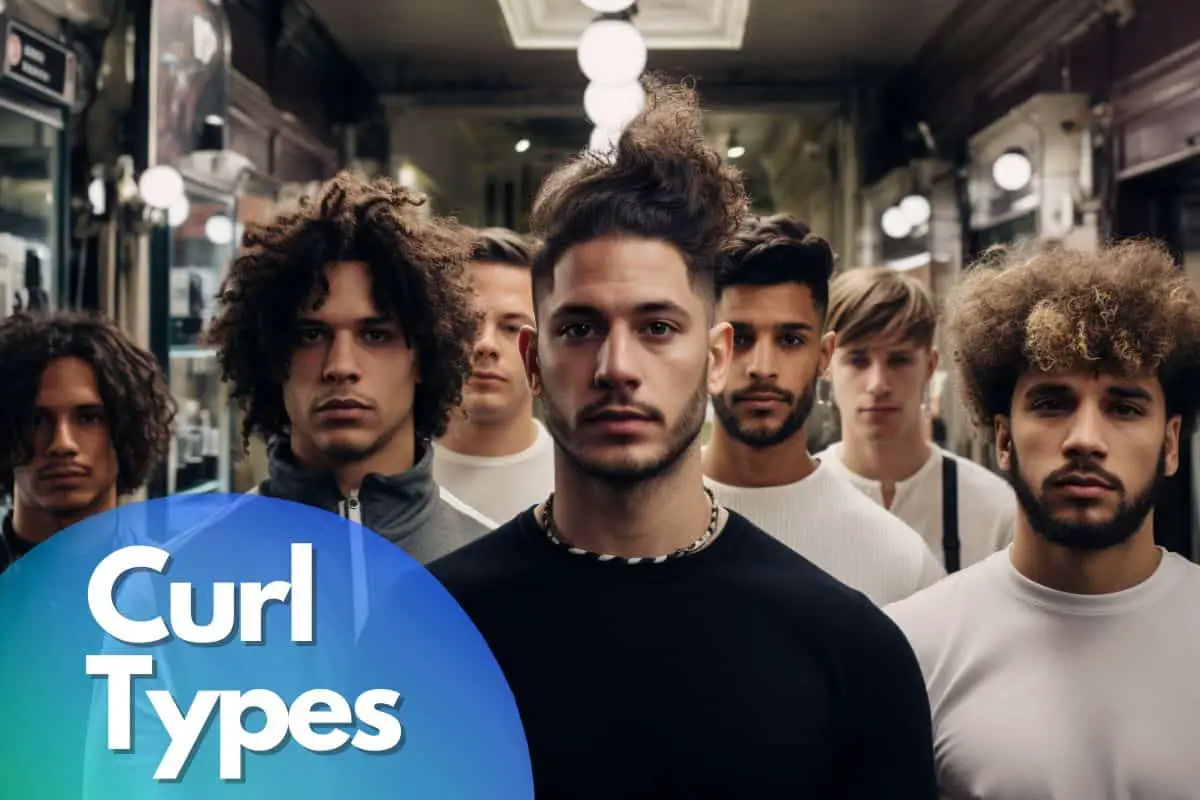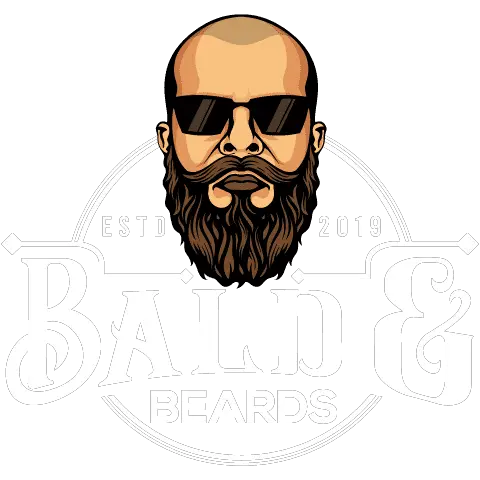Are you tired of being confused by the different textures on your head of curly hair? Do you feel like giving up because it’s too complicated to style? Don’t worry, you’re not alone. Decoding curl types can be frustrating, but it doesn’t have to be.
Thanks to a particular hair typing system for curls developed up by hairstylist Andre Walker, you can at least identify your curl pattern and know where to start when shopping for hair-care products. But with so much information out there, it’s easy to get overwhelmed about hair care.
That’s why we’ve examined two industry pros to break down the finer points of the typing categories and provide product recommendations to make the curl-care aisle less intimidating. Say goodbye to confusion and hello to well-defined, beautiful curls. Read on to become a curl-typing pro and take the first step towards embracing your texture.
What is a curl type?
A curl type refers to the shape of individual hair strands. They’re classified into four types – straight (Type 1), wavy (Type 2), curly (Type 3), and coily (Type 4). Each type is further broken down into subtypes A, B, or C, indicating the curl tightness or diameter.
Curl type refers to the shape and pattern of an individual’s hair. It is determined by a classification system that ranges from type 1 (straight) to type 4 (kinky and coily), with subtypes A, B, and C for types 2-4 based on the size and shape of the curls. For example, someone with type 3A hair would have loose, springy curls, while someone with type 4C hair would have tightly coiled hair. Understanding your curl type can help you choose the right products and styling techniques for your hair.
| Curl Type | Description | Recommended Products |
|---|---|---|
| Type 1 | Straight hair with no texture or curl patterns. | Varies based on individual hair needs. |
| Type 2A | Wavy hair that is fine and thin. It is very easy to handle, can be blown out into a straighter style or take on curlier looks with relative ease. | Lightweight products like the Aveda Phomollient Styling Foam to add volume without weighing hair down. |
| Type 2B | Wavy hair that is medium-textured. It is a little more resistant to styling and has a tendency to frizz. | Texturizing mists like the Ouai Wave Spray to enhance natural waves. |
| Type 2C | Wavy hair that is thick and coarse. It is a little more resistant to styling and has a tendency to frizz. | Products that combat frizz and add definition. |
| Type 3A | Curly hair that is very loosely curled. The shorter the hair, the straighter it gets. The longer the hair the more defined the curl. | Hydrating products that enhance curl definition. |
| Type 3B | Curly hair with a medium amount of curl, ranging from bouncy ringlets to tight corkscrews. | Products that enhance curl definition and control frizz. |
| Type 3C | Curly hair with tight curls in corkscrews. The curls can be either kinky, or very tightly curled, with lots and lots of strands densely packed together. Often referred to as “big hair.” | Deep conditioning products and oils to maintain moisture and enhance curl definition. |
| Type 4A | Kinky or coily hair that, when stretched, has an “S” pattern, much like curly hair. It tends to have more moisture than Type 4B. | Moisturizing products that enhance curl definition and combat dryness. |
| Type 4B | Kinky or coily hair that has a “Z” pattern, less of a defined curl pattern. The hair bends in sharp angles like the letter “Z”. It has a wiry texture. | Deep conditioning products and oils to maintain moisture and enhance curl definition. |
- This is a general classification, and individual hair types may vary.
- The table assumes an increasing level of curl tightness and definition from A to C within types 2 to 4.
- These are general recommendations, and individual hair needs may vary.
- Always consider your hair’s specific needs when choosing products.
Curl Type History
Andre Walker, who devised a hair type classification system, served as Oprah Winfrey’s personal hairstylist for many years. His system, which he developed in 1997 to promote hair care products, has been widely adopted and continues to guide individuals in understanding and caring for their hair texture. It classifies hair into four main types: straight (Type 1), wavy (Type 2), curly (Type 3), and coily (Type 4).
Other Curl Type Classification Systems
While Andre Walker’s system is indeed the most well-known and widely used, it’s worth noting that it’s not the only system for classifying curl types. There are a few variations and additional systems that provide more specific details or categorizations. Here are a few of them:
- Lorraine Massey’s Curl Typing System: Author of “Curly Girl: The Handbook,” Lorraine Massey developed a curl typing system focusing on curly hair care and maintenance. Her system emphasizes the hydration needs of different curl types and encourages the use of sulfate-free shampoos and silicon-free conditioners.
- FIA’s Hair Typing System: The FIA (Follicle, Individual strand thickness, and All-over density) hair typing system includes three characteristics: curliness (very similar to Andre Walker’s system), hair strand thickness (from fine to coarse), and overall hair density.
- Lois Hair Typing System: The Lois System considers the pattern (straight, wavy, curly, kinky), strand size (thickness), and texture (smooth, wiry) of the hair. This system is more inclusive as it categorizes hair types that may not fit neatly into Andre Walker’s system.
Remember, the best system to use is the one that helps you understand your hair the best and effectively meet its specific needs for maintenance and styling.
Why is my hair curly?
Why do some people have curly hair and others have straight hair? Hair texture is primarily determined by genetics, and it’s fascinating to learn about the science behind what makes hair curly or straight. Curly hair is formed when the hair follicle grows in an oval shape, while straight hair grows from a perfectly round follicle. The flatter the oval, the tighter the curls will be.
Additionally, curly hair has more protein bonds in the hair shaft than straight hair, which causes it to curl. The sulfur-containing amino acid cysteine is found abundantly in the fibrous protein hair is made up of – keratin. These cysteines bond with other cysteines further down the hair shaft, causing hair to curl. The more protein bonds in the hair shaft, the curlier the hair will appear.
Remember that most people have multiple curl patterns on their hair, and the hair on our head grows differently depending on where it is. It’s important to embrace and care for your unique hair texture, whether wavy or curly, or straight! Check out the different curly hair fade haircuts, and the afro fade haircuts you could do for your hair.
All Curl Types
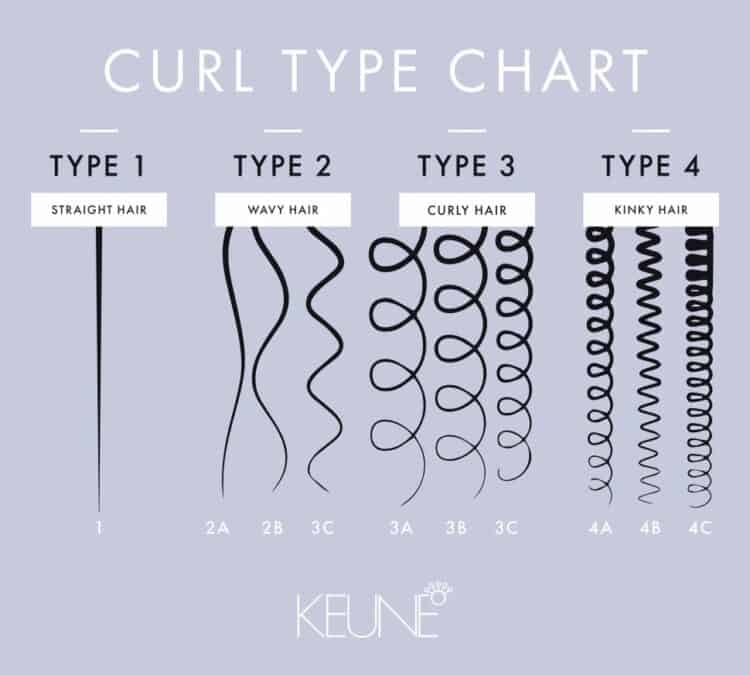
Type 2a
Type 2a curls are characterized by barely-there waves with a tousled texture. These curls can be easily straightened or enhanced with a sea salt spray and a curling iron. However, heavy styling products should be avoided as they can weigh down the strands. An airy, water-based mousse like Aveda Phomollient Styling Foam is recommended to add volume at the root.
For optimal health, a sulfate-free cleanser and conditioner should be used along with a repair oil to nourish the mid-lengths and ends of the hair. Type 2a curls are easy to style but prone to frizz and losing definition easily, so it is important to use the right products and techniques to maintain their shape and health.
Type 2b
Type 2b curls are wavy and have a slight frizz on the crown of the head. These curls are bendable and can be fine to coarse, with a definitive S pattern that lays closer to the head. The waves are looser than Type 2a and easily lose curl definition.
To style Type 2b curls, lightweight leave-in conditioners, airy sprays, and volume-boosting foams are recommended. Heavy curl creams should be avoided as they weigh down the hair. To enhance the curls, scrunching the hair with a diffuser or air-drying is recommended.
Straightening the hair with a flat iron is also an option for a sleeker look. Products such as Shea Moisture Coconut & Hibiscus Curl Enhancing Smoothie and DevaCurl Wave Maker are great for Type 2b curls. Type 2b curls can look their best with the right products and styling techniques.
Type 2c
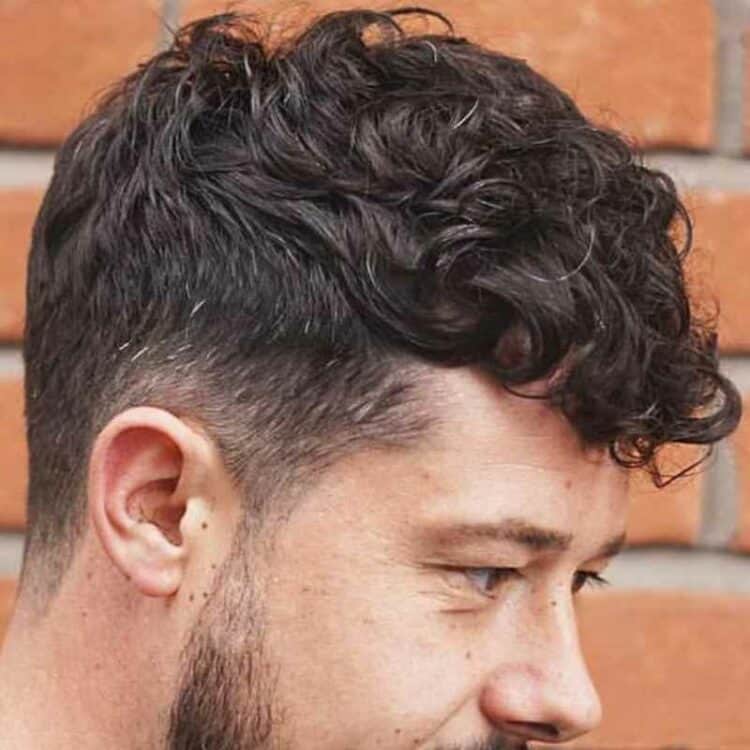
Type 2C hair is a mixture of waves and curls that form an S shape. It is prone to frizz and requires a lot of moisture to keep it looking healthy. Stylist Marcus Francis recommends using a hair mask twice a month to provide manageability and moisture. To smooth the hair cuticle and reduce frizz, apply a light layer of a cream-based product for blowouts or natural waves.
Use a volumizing mousse on freshly washed wet hair and let the waves air dry naturally while gently bouncing strands upwards with a flat palm of your hand. Try using lightweight leave-in conditioners, airy sprays, and volume-boosting foams.
The Kérastase Discipline Fluidissime Complete Anti-Frizz Care Spray is an excellent choice to balance volume and frizz. Remember, 2C hair is a mixture of waves and curls, so maintaining volume and keeping frizz at bay is tricky, but with the right products and techniques, it can be easily managed.
Type 3a
Type 3a curly hair is a beautiful hair type that ranges from loopy S-pattern curls to tight ringlets. The curls have a circumference, the width of sidewalk chalk, and are usually very defined. Compared to other Type 3 curls, Type 3a curls have a larger circumference, about the size of a Sharpie marker. This hair type tends to be dry, so it is recommended to deep condition it every week.
To maintain the curls’ definition and reduce frizz, using an anti-humectant styling cream, cream gel, or styling milk is advised. It is also important to use lightweight products that don’t weigh the curls down and to layer in the hydration. Type 3a curly hair can be healthy, shiny, and beautiful with proper care.
Type 3b
Type 3b curls are a beautiful combination of loopy S-pattern curls and tight ringlets. They are characterized by a circumference similar to that of a marker or pen. These curls are usually voluminous and have well-defined curls.
Styling Tips:
To keep your 3b curls looking their best, it’s important to avoid using heat on them. Instead, try using lightweight products that won’t weigh your curls down. Layering in hydration is also crucial to keeping your curls healthy and bouncy.
Recommended Products:
For Type 3b curls, we recommend using a leave-in conditioner, a curl-defining cream or gel, and a gentle shampoo and conditioner. Look for products specifically designed for curly hair and containing natural ingredients like coconut oil, shea butter, and aloe vera.
In conclusion, Type 3b curls are a beautiful and unique hair type that can be easily styled with the right products and techniques. By following these tips and using the recommended products, you can keep your curls looking healthy, defined, and full of volume.
Type 3c
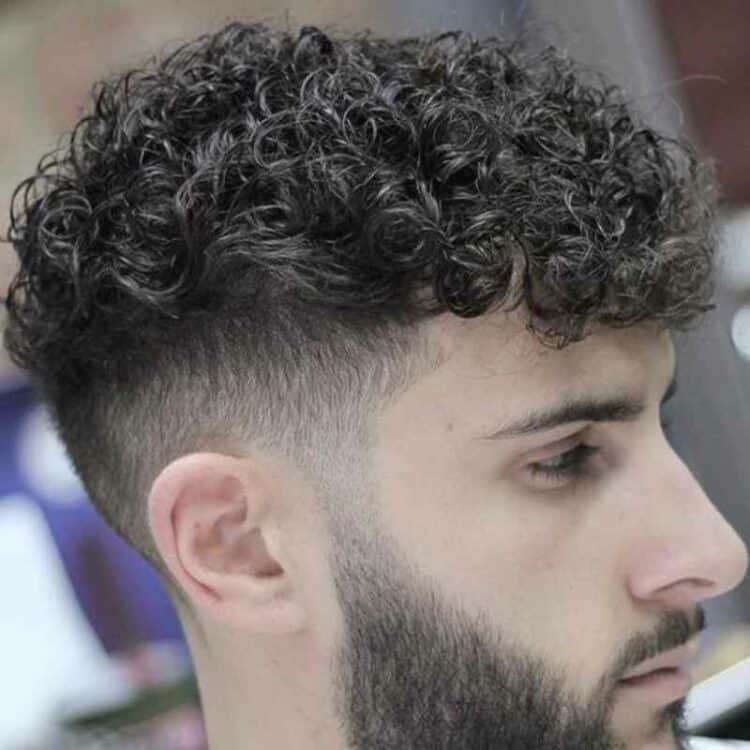
Type 3c curls are tightly packed corkscrew ringlets with the most volume among type 3 curls. These curls are prone to dryness and tangles, so proper moisturization is key. Type 3c hair is more prone to frizz and loss of curl definition due to the open cuticle and the hair’s natural oils having a harder time traveling down from the roots. To care for type 3c curls, it is important to use a moisturizing shampoo and conditioner, deep condition regularly, and use leave-in conditioners and styling products to help define and maintain curls.
I have found that using a satin or silk pillowcase and avoiding heat styling tools has helped reduce frizz and keep my wife’s curls healthy and defined. Remember to embrace and celebrate your unique curls, and have fun experimenting with different products and techniques to find what works best for you.
Type 4a
Type 4a curls are characterized by tight, small, kinky curls that are naturally dry and can range from fine to coarse. These curls have a visible curl pattern and require significant moisture to stay healthy. To keep Type 4a hair hydrated, it’s recommended to use creamy humectants as leave-in treatments and curl-defining custards or gelee for twist-outs and braid-outs.
Slippery moisturizing products are great for detangling, and stronger hold products can help capture the curl for a wash-and-go style. With proper care and styling, Type 4a curls can be molded, sculpted, and texturized in many ways.
Type 4b
Type 4B curly hair is characterized by its small, zigzagged pattern, often accompanied by compressed and s-shape coils. This hair type is naturally dry and can range from fine to coarse texture. One common challenge for those with 4B hair faces is maintaining moisture, as it is most vulnerable when wet. Conditioning the curl is key both in the shower and post-shower.
To keep your hair healthy, it is recommended to use gentle shampoos and conditioners, such as Alaffia’s EveryDay Coconut shampoo and conditioner, which are crafted with virgin coconut oil and no artificial colors or synthetic fragrances. Additionally, using a rich leave-in conditioner, such as Pattern Leave-In Conditioner, can help nourish your hair. With proper care, 4B hair can lend itself to various styles and tolerate a range of products.
Type 4c
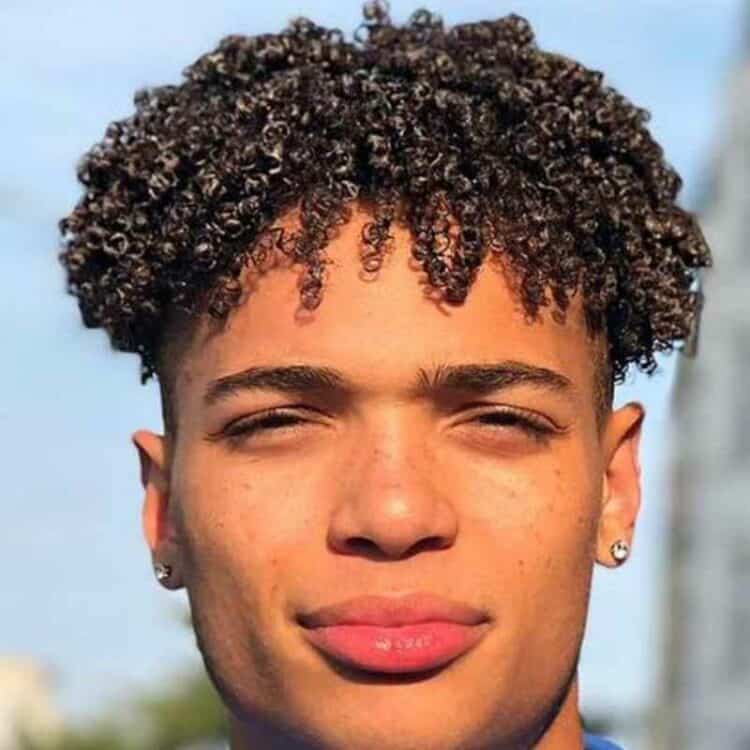
Type 4c curls are the kinkiest and coiliest of all hair types. The zigzag curl pattern is so dense and fine that it may be hard to see individual strands without stretching each strand out. Type 4c hair requires the most moisture and benefits greatly from extra hydration. Heavy butters like Melanin Hair Care Twist Elongating Style Cream work well to maintain moisture.
Type 4c hair is versatile and can be worn in many different natural hairstyles. To care for Type 4c hair, use slippery moisturizing products to help with the detangling process and provide hydration. For styling, a stronger hold product like a curl-defining custard or gelee can stretch the coil safely for twist-outs and braid-outs.
How to Identify Your Curl Type
Identifying your curl type is essential to understanding how to care for and style your hair. The curl type system focuses on three types: wavy (Type 2), curly (Type 3), and coily (Type 4). Each type is further classified into subtypes A, B, and C based on the width or diameter of your wave, curl, or coil. For example, Type 2A has tousled, beachy waves that sit close to the head, while Type 2C has waves that begin at the root in a more defined S shape throughout the hair, with more body and volume.
To determine your curl type, observe your hair’s natural texture, examine the shape of your curls, and consider factors like humidity and product usage. Remember that most people have more than one type of pattern on their head so that you may have a combination of kinky, coily, wavy, and curly. Once you’ve identified your curl type, you can care for and style your hair accordingly.
For example, Type 3 curls need extra moisture and gentle handling to prevent frizz and breakage, while Type 4 coils benefit from regular deep conditioning and protective styling to retain moisture and prevent damage. Embrace and celebrate your unique hair pattern, and experiment with different products and techniques to find what works best for you.
Remember that no curl is the same, and having many different curl types is completely normal and what makes our hair unique. By understanding your curl type, you can select the best products, treatments, and styling techniques to enhance and define your curls. Finally, always be open to the possibility that your specific curl type may evolve over time, especially as you become more consistent with your daily routine. You can achieve healthy, beautiful curls that showcase your individuality and style with proper care and attention.
The best haircuts for curly hair types
Choosing the right haircut for curly hair is essential to ensure it looks its best. Curly hair is most often categorized into three different types: type 2 (wavy), type 3 (curly), and type 4 (kinky and coily). Within each type, three subtypes (A, B, and C) vary based on the curl’s shape and diameter.
For Type 2 hair, a layered cut enhances the natural waves. For Type 3 hair, a shoulder-length cut with long layers perfectly showcases the curls. For Type 4 hair, short haircuts like a tapered cut or a buzz cut work well to bring out the texture. You can also explore Afro Fade styles if you like. It’s important to find a stylist who has experience with curly hair to ensure that the haircut is done correctly. After getting a haircut, it’s important to maintain healthy curls by using products that are specifically designed for curly hair, avoiding heat styling tools, and regularly deep conditioning.
FAQ
What products should I use for my curl type?
To choose products for your curl type, consider its specific needs. Fine or loose curls benefit from light, volumizing products like mousses. Medium curls may need hydrating creams or leave-in conditioners. Coarse, tight curls often require deep conditioners, butters, or oils for moisture and definition.
How can I keep my curls healthy?
Maintaining healthy curls involves regular hydration, using sulfate-free shampoos, and minimizing heat styling. Deep conditioning weekly helps preserve moisture. Consider using a microfiber towel or cotton t-shirt to reduce frizz when drying. A silk pillowcase can also prevent hair damage while sleeping.
How can I reduce frizz and increase definition?
Hydrate your hair with a deep conditioner regularly to reduce frizz and increase definition. Use a diffuser when blow-drying, and avoid towel-drying. Apply a silicone-free serum or a defining cream on damp hair. Finally, avoid brushing dry curls to maintain their shape.
What are the benefits of using conditioner for curly hair?
Conditioner benefits curly hair by providing hydration, reducing frizz, and promoting curl definition. It helps to detangle knots, making hair easier to manage and protects against damage by forming a barrier on the hair shaft. Regular use can result in healthier, more vibrant curls.
How does porosity affect my curl type?
Porosity affects curl type by determining how easily hair absorbs products. Nonporous hair, which floats in water, requires heavier creams to absorb the product, while porous hair, which sinks in water, requires lighter, water-based products. Determining porosity can be done by simply dunking hair in water. Porosity is hereditary or caused by damage and can be affected by factors such as heat, over-processing, and natural weather. Understanding porosity levels can help in choosing the right products for curly hair.
What is the best way to style my curl type?
The best way to style your curl type is to hydrate, define, and set them. Use a moisturizing product suitable for your curl type, followed by a curl defining cream or gel. Allow hair to air-dry or use a diffuser for volume, preserving natural curl pattern.
What are the 4 types of curls?
The four types of curls are: Type 1 (straight hair), Type 2 (wavy hair with a slight ‘S’ shape), Type 3 (curly hair with a clear ‘S’ or spiral shape), and Type 4 (coily or kinky hair with tight zig-zag pattern). Each type further subdivides into A, B, or C based on curl tightness.
What are 2B or 2C curls?
2B curls are waves with more defined S-patterns and a bit of frizz at the crown. They usually lay closer to the head. 2C curls are wavy but thicker, coarser, and more prone to frizz, featuring defined S-shaped waves that start at the roots.
What are Type 2 Type 3 curls?
Type 2 curls, or waves, range from loose loops (2A) to defined S-shaped curls (2C). Type 3 curls are more spiral-shaped, ranging from loose, large loops (3A) to tightly coiled, springy curls (3C). Both types can benefit from hydration and frizz-controlling products.
What do 3A curls look like?
Type 3A curls are characterized by well-defined, springy spiral loops. These curls have a circumference of a large piece of chalk or a tape dispenser. They have a smooth texture and are often shiny but can be prone to frizz, especially in humid conditions.

